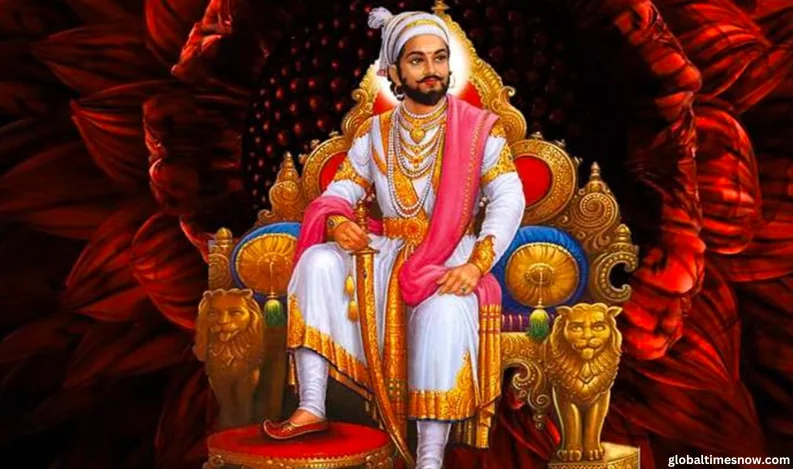Chhatrapati Shivaji Maharaj (1630–1680) was one of India's greatest and most visionary leaders. He established the Maratha Empire, challenging the mighty Mughals and other powerful rulers of the time. Shivaji Maharaj was a brilliant strategist, an exceptional military leader, and a progressive administrator who laid the foundation of Swarajya (self-rule). His policies on governance, military tactics, naval expansion, and social justice set a precedent for future rulers and continue to inspire generations.
1. Early Life and Lineage
Shivaji Maharaj was born on 19 February 1630 at Shivneri Fort, near Pune, in present-day Maharashtra. He belonged to the Bhosale clan, known for its valiant service to various Deccan Sultanates.
Parents and Upbringing
-
Father: Shahaji Bhosale, a prominent general under the Adilshahi and Mughal rulers.
-
Mother: Jijabai, a deeply religious and strong-willed woman who played a crucial role in shaping his character.
-
Mentors and Influences: Shivaji grew up under the guidance of Dadoji Kondadev, learning statecraft, military strategies, and administration.
-
Childhood Inspiration: Inspired by Hindu epics like Ramayana and Mahabharata, he developed a deep commitment to Hindu culture and self-rule.
2. Rise to Power: The Foundation of Swarajya
Shivaji Maharaj’s dream was to establish Swarajya—a kingdom free from foreign domination. He started by capturing strategically important forts in the Sahyadri mountain range.
Early Conquests (1645-1659)
-
Torna Fort (1646): His first major victory at just 16 years old.
-
Rajgad, Purandar, and Kondhana (Sinhagad): Strengthened his hold over Pune and surrounding regions.
-
Pratapgad Fort (1659): The site of his legendary encounter with Afzal Khan, where Shivaji displayed remarkable foresight and military skill.
Battle of Pratapgad (1659): A Turning Point
Afzal Khan, a general of the Bijapur Sultanate, was sent to crush Shivaji’s rising power. In a dramatic face-to-face meeting:
-
Afzal Khan attempted to assassinate Shivaji.
-
Shivaji, foreseeing betrayal, used his tiger claws and dagger to kill Afzal Khan.
-
His forces decimated the Adilshahi army, marking a turning point in his resistance against foreign rule.
3. Struggles Against the Mughals
Shivaji Maharaj’s growing power drew the attention of the Mughal Emperor Aurangzeb.
Sack of Surat (1664)
To weaken Mughal finances, Shivaji launched a daring raid on the rich port city of Surat, plundering it strategically without harming civilians.
Treaty of Purandar (1665)
-
Facing a massive Mughal invasion led by Raja Jai Singh I, Shivaji was forced to sign the treaty, surrendering 23 forts.
-
However, he later regained control through military campaigns and diplomacy.
Escape from Agra (1666): A Masterstroke
-
Shivaji and his son, Sambhaji, were held captive in Agra by Aurangzeb.
-
Using his wit, he faked illness and escaped hidden in fruit baskets, a move that stunned the Mughals.
4. Coronation and Expansion
On 6 June 1674, Shivaji Maharaj was formally crowned Chhatrapati at Raigad Fort, officially establishing the Maratha Empire.
-
Adopted the title 'Hindu Pad Padshahi', symbolizing Hindu sovereignty.
-
Expanded his kingdom into Karnataka, Tamil Nadu, and Andhra Pradesh.
-
Strengthened the Maratha Navy, recognizing the importance of maritime defense.
-
Instituted progressive governance, benefiting farmers, traders, and warriors alike.
5. Administrative and Military Reforms
Shivaji Maharaj was not just a warrior but also a visionary administrator who implemented innovative governance policies.
Military Tactics
-
Introduced Guerrilla Warfare (Ganimi Kava), making use of Maharashtra’s rugged terrain.
-
Built and fortified over 300 forts, ensuring strategic control.
-
Developed a naval force, securing the Konkan coastline against foreign invasions.
-
Established an intelligence network, keeping him ahead of enemy plans.
Revenue and Governance
-
Ryotwari System: Farmers paid taxes directly to the state, reducing corruption.
-
Established the Ashta Pradhan Mandal, an eight-member council responsible for different aspects of governance.
-
Ensured justice through a fair judicial system, treating Hindus and Muslims equally.
Religious and Social Policies
-
Opposed forced conversions and encouraged religious harmony.
-
Provided protection to women, prohibiting their mistreatment.
-
Respected all places of worship, ensuring the safety of temples and mosques alike.
-
Promoted education and cultural revival, emphasizing Sanskrit and Marathi literature.
6. Final Years and Legacy
Chhatrapati Shivaji Maharaj passed away on 3 April 1680 at Raigad Fort. Though his demise was a great loss, his empire continued to grow under his successors.
Impact on Indian History
-
Foundation of the Maratha Empire, which later dominated India.
-
Inspired leaders like Chhatrapati Sambhaji Maharaj, Peshwa Bajirao, and Maharaja Ranjit Singh.
-
His military strategies continue to be studied in modern warfare.
-
Played a crucial role in India’s independence movement, inspiring freedom fighters.
Honors and Memorials
-
Shiv Jayanti is celebrated annually across Maharashtra.
-
Statues of Shivaji Maharaj stand in major Indian cities and abroad.
-
His life has been depicted in films, literature, and theater.
-
His naval innovations continue to influence India’s modern maritime strategies.
Conclusion
Chhatrapati Shivaji Maharaj was not only a warrior but a visionary ruler, nation-builder, and strategic genius. His ideals of Swarajya, justice, and people’s welfare remain relevant even today.
His name is synonymous with courage, wisdom, and patriotism, making him an eternal icon in Indian history. His story is a testament to leadership, resilience, and an unwavering commitment to self-rule.
Jai Bhavani! Jai Shivaji!
You may also like:-














